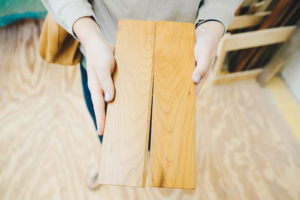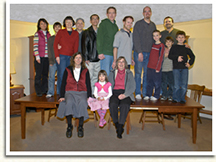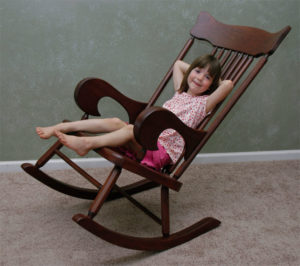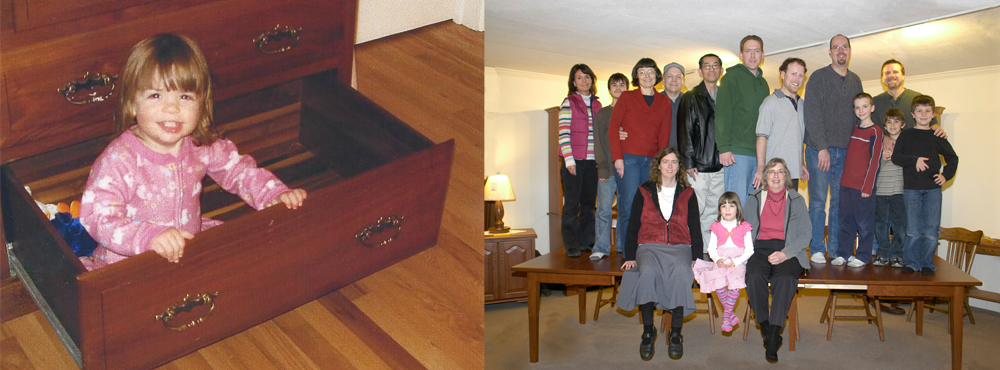What do you love about your antique furniture? Sentimentality & nostalgia. Those nostalgic feelings probably trigger wonderful memories with your family. Maybe it reminds you of visiting for Christmas as a child or bringing your children over to play baseball in the yard with their grandparents. That is why it is so important to craft furniture that can withstand the years, the memories, the horseplay so you & your families can have visible mementos of those experiences. (Plus, it helps that our furniture is also super comfortable & durable!)
Even though antique furniture lasts longer than low quality furniture it also deteriorates. Some of the biggest causes of weakness in antique furniture include poor adjustability to extremes in humidity, weak joints or low-quality workmanship. In fact, today I want to share with you 3 of the biggest issues we see in antique furniture & how we design our furniture differently to avoid those problems.
Challenge 1: Humidity

One of the most common issues you may see in wood antique furniture is wear & tear due to changing humidity. Dry Forced Air heat will dry out furniture in the winter while damp summer weather provides extra moisture. Considering these two extremes, we specifically craft our wood furniture to handle changing humidity levels.
Because solid wood furniture is always expanding and contracting to adjust to the humidity levels of the environment, all joints are constructed with movement in mind. Wood is dried in George’s kilns and furniture is constructed in a humidity-controlled environment similar to most homes. This helps the furniture expand and contract as one unit with the seasonal changes of the environment. When the furniture can respond to humidity as one unit, it is more protected from warping or weakness.
Challenge 2: Weak joints
Let’s talk about rung joints. Maybe not a typical topic of conversation unless you have ever tried to pick up a chair where the back comes off in your hand or sat in a chair and the rung pops out leaving your chair in pieces. Aside from the frustration & inconvenience, this can become an expensive situation when your only solution is gluing the rungs for the rest of its life or replacing the chair. We avoid this situation from the beginning with our method of attaching rung joints.
On chairs where it is necessary to use glue rather than screws to keep joints together, each rung is hand-sanded to fit tightly in its hole. The joints are so tight that the chair can hold the weight of an adult even before any glue is applied to the joints. The glue is applied to the hole with a small paintbrush and the chair is clamped tightly together, forcing the glue throughout the pores of the wood.
George’s chairs do not need to be treated with special care to maintain their strength. They have held up over years of workmen leaning back on them during break time and children using the back of them for makeshift sliding boards. On the few occasions over the years when chairs have needed repair, it typically is due to a damaged rung rather than a loose joint.
Challenge 3: Warped wood

One final way we see weakness in antique furniture is simply due to thickness and the support of the wood. We have broken down our process of selecting & preparing the wood in this blog about our complete handcrafted method. The thicker the board the better however anything over 12 inches in width needs to be supported by a table skirt, wooden batten or toeboard. Learn about solid wood bottoms of the dresser drawers, the strength of a dining room table, & even in the durability of our non-tip rockers.
George’s commitment to solid wood construction has always included solid wood drawer bottoms. As a result, you don’t have to worry about drawer bottoms coming apart due to the weight of the contents in the drawers. In fact, George’s creative grandchildren have even used drawers as hiding places without harming the furniture!
 Table Test
Table Test
Strong construction extends into the tables – even when fully extended to 21 feet. The strength of George’s extension tables was tested. The first idea of placing a small vehicle on top of the extension table was considered. The logistics of how to get a vehicle on the table was abandoned for a new idea of standing people on the table. The final result of the strength test placed 14 people (1887 lbs.) on top of the table and the table stood strong. The center leg supports the center of the table without interfering with your guest’s legs. The Pentagon even commissioned one of our extension tables for their conference room!
Non-Tip Rocker
You can especially see the strength of high-quality wood in our non-tip rockers. When George was small, he was having so much fun rocking in his rocking chair that he tipped it right over. After recovering from the fall, he promised his mother that he would build a rocker that would not tip over. George built that rocker and now there are 7 different sizes from a child’s rocker to a rocker for the large people (300-400 lbs.) Large or small, tall or short, there is a rocker designed for you that does not tip over.
Ready for strong, heirloom furniture that does not wear with age or bad construction?
George’s unwavering commitment to building strong, hardwood, heirloom furniture continues with each new design. Each piece is signed and dated by its maker and finished with a water-resistant finish. Bring your ideas and desires for functional furniture and George’s craftsmen will make those dreams come true. And the best place to start when you are dreaming up your perfect dining set is knowing what to look out for. Start with our “Guide on How To Spot Quality Furniture” & give us a call as soon as you are ready to jump in to designing your own high-quality furniture.
